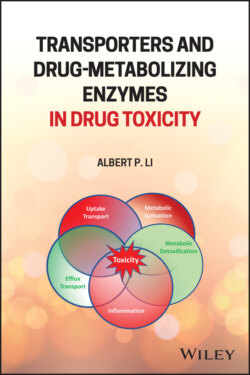Читать книгу Transporters and Drug-Metabolizing Enzymes in Drug Toxicity - Albert P. Li - Страница 44
2.6 Summary
ОглавлениеIncreasing evidence suggests that drug metabolism and hepatic transporters play essential roles in the development of hepatotoxicity. The formation of chemically‐RMs and the abnormal accumulation of toxic bile acids or drug metabolites are two proven mechanisms causing DILI. The formation of RMs is a byproduct of physiological biotransformation of phases I and II metabolism enzymes, while bile acid accumulation results from abrupted functions of the hepatic transporters. Some of these drug‐metabolizing enzymes and hepatic transporters have significantly varied expression levels among individuals, which can lead to outcomes other than the development of DILI. In addition to the gene variations summarized in this chapter, many environmental and host factors; such as age, gender, co‐medications, comorbidities, and life‐style all affect the susceptibility of individuals through the disturbance of drug‐metabolizing enzymes and hepatic transporters. The contribution of these factors has been well‐reviewed in the literature [111, 112] and the nature of the co‐factors in these events has led to the “multiple determinants hypothesis” for idiosyncratic drug toxicity [113]. Further investigations are still needed to establish the association between interactions of these factors and their contributions to the development of DILI.
